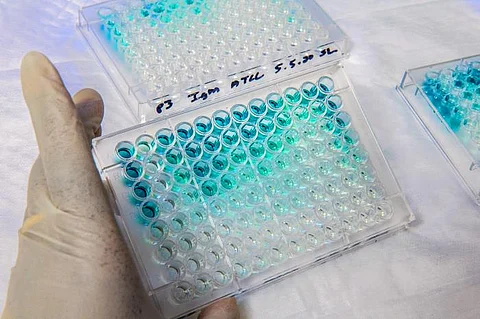There are also no reliable blood (that is, liquid biopsy) tests for the diseases because of low sensitivity and specificity. Current blood tests are also unable to reliably predict NASH and fibrosis staging.
Professor Geltrude Mingrone, from King's College London and Catholic University of Rome in Italy, looked to find a more accurate liquid biopsy test.
The paper, published in leading journal Gut, identified two protein biomarkers, PLIN2 and RAB14, that were used as part of an algorithm to identify people with NASH and/or liver fibrosis.


